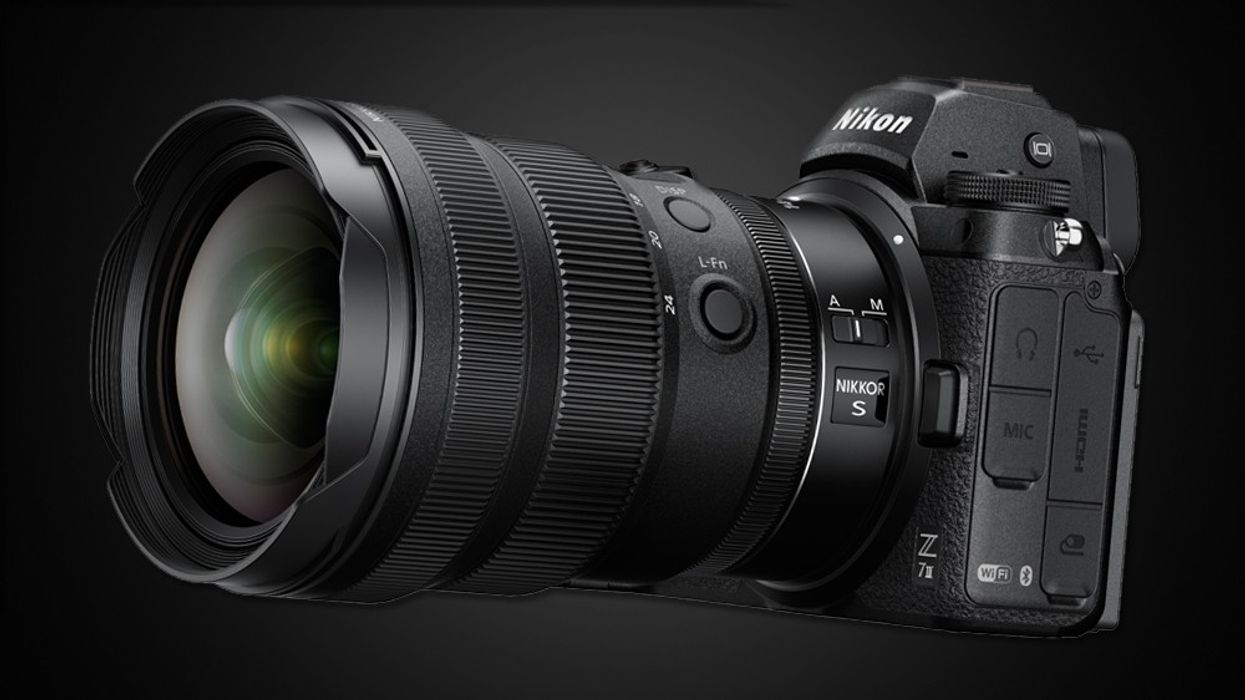Nikon Z7 II and Z6 II Cameras To Support Blackmagic and ProRes RAW
Let's get RAW.

When Nikon unveiled the Z7 II and Z6 II full-frame mirrorless cameras, what flew under the radar is that both cameras will support 12-bit Apple ProRes RAW and Blackmagic RAW (BRAW) via its HDMI output.
That said, there's been incorrect reporting by multiple outlets saying the Z7 II and Z6 IIdo not need to be sent into a Nikon service in order to receive the RAW update.
That is incorrect.
The Z7 II and Z6 II will require the internal upgrade to be performed by a Nikon service facility.
If you read otherwise, that's wrong. This affects both camera models and both RAW formats. The service charge will be $199.95 + shipping, which is the same cost required to update the Z7 and Z6 cameras.
- Z7 II: 4K UHD at 30p, 25p, 24p (DX format only), 1080p FHD at 60p, 50p, 30p, 25p, 24p (FX format only)
- Z6 II: 4K UHD at 30p, 25p, 24p (FX, DX format), 1080p FHD at 60p, 50p, 30p, 25p, 24p (FX, DX format)
Blackmagic RAW will be available in February 2021, and No Film School has confirmed that the Video Assist 12G will support 4K 30p for both cameras right out of the box. That said, if you purchase the RAW update now to use ProRes RAW, when BRAW is released, you will not need to send the camera back into Nikon. All you will need to do is download and install a firmware upgrade.
Those who have purchased the ProRes RAW update on the original Z7 or Z6 will get BRAW for free as part of a software update and you won't need to send your camera to a Nikon service facility. Only those who haven't paid for the update will need to send in the camera.
If RAW isn't a necessary part of your workflow external 10-bit N-Log is also an option.
We talked about how the second-gen cameras are a refresh worth considering for video shooters, and the addition of BRAW is welcomed, especially those using a Resolve workflow. If you use a Pocket Cinema Camera 6K/4K, or URSA Mini, you'll be able to bring in a Nikon Z as a B- or C-camera and shoot BRAW.
The noticeable difference between the Z7 II and Z6 II is their megapixel count. The Z7 II touts a 45.7-megapixel backside-illuminated (BSI) CMOS sensor, while the Z6 II features a 24.5 megapixel BSI CMOS sensor. But as we know, megapixel count is everything when it comes to video. If you're shooting stills and tend to print large portraits, yes, you're going to want to consider higher megapixel counts.
Another difference is their phase-detection points, but that's a direct connection to the sensor.
The Z7 II has 493 detection points and Z6 II offers 273. How many is enough? That depends on the technology behind the autofocus, but rather than simply counting the number of phase-detection points, you should be noting how much of the sensor is covered. Is it 50%, 80%, or 100% of the sensor? If you have 400+ phase-detection points, but it only covers a small portion of the sensor, it's not going to be as effective when objects appear near the edge of the frame. You could lose focus. Nikon's cover 90% of the sensor using a hybrid AF.
Nikon Z7 II & Z6 II Mirrorless Cameras

- 4K UHD 60p video
- Dual card slots
- Comfortable. Durable. Intuitive
- Vertical Grip Ready
Do you own a Nikon Z camera? Share your thoughts in the comments below.



 Richard Gere and Uma Thurman in 'Oh, Canada' via Kino Lorber
Richard Gere and Uma Thurman in 'Oh, Canada' via Kino Lorber  Uma Thurman in 'Oh, Canada'via Kino Lorber
Uma Thurman in 'Oh, Canada'via Kino Lorber 









